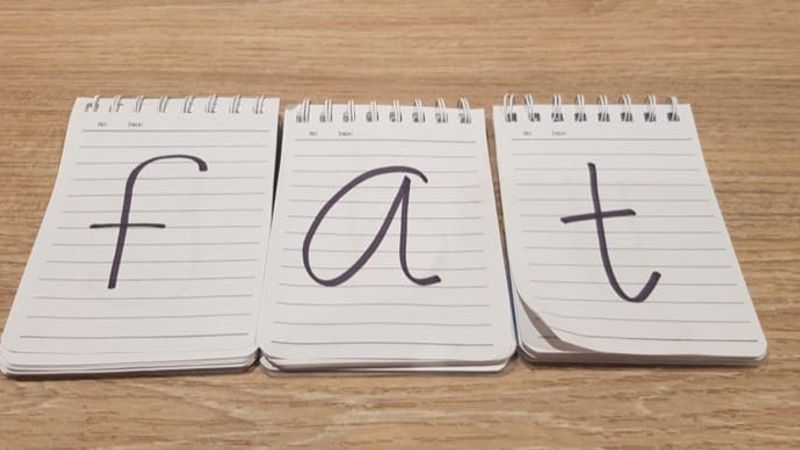

Our Review Process
Our articles undergo extensive medical review by board-certified practitioners to confirm that all factual inferences with respect to medical conditions, symptoms, treatments, and protocols are legitimate, canonical, and adhere to current guidelines and the latest discoveries. Read more.
Our Editorial Team
Shifa Fatima, MSc.
Author
Dr. Apoorva T, MHM.
MEDICAL ADVISOR
What is Body Fat Percentage and why is it important?
To understand why body fat percentage is important, we first need to understand what it is. Our bodies are composed of many different components — muscles, bones, body water, organs, and of course, fat. Fat percentage is the ratio of fat in relation to those other components.
Now, although fat gets a bad reputation, it is essential for many of our body functions. It helps maintain life and reproductive functions, and the accumulation of adipose tissue from stored fat helps cushion and protect the organs in your chest and abdomen. So having accumulated fat is important, but like everything in life, you need to maintain a balance. That’s why calculating body fat percentage is so important in identifying your health — having a body fat percentage that is too high or too low can indicate certain health risks.
Table of Contents
How do we calculate body fat percentage?
There are several methods to calculate this. Here are some of the most common ones.
1. Calipers
It’s based on the idea that about 50% of total body fat lies under that skin, and involves measuring the thickness of skinfolds at standardized sizes. It is also known as the Skinfold Method
Steps to calculate body fat using calipers:
- The skinfold technique is one of the oldest techniques and uses the percentage of body fat by measuring the thickness of the skinfold at 7 locations in the body
- The special calipers pinch the skin (not too hard) at these locations and pull the folds of the skin to hold the skin and fat tissue.
- The 7 locations wherein these measurements need to be taken are:
- Abdomen – next to the navel
- Midaxilla – towards the midline of the side of the torso
- Pectoral – middle of the chest ahead of the armpit
- Quadriceps – middle part of the upper thigh
- Subscapular – below the shoulder blade edge
- Suprailiac – above the iliac crest of the hip bone
- Triceps – behind the upper arm
- Use the calipers to take the measurements twice or thrice (for lesser margins of error in calculations)
- Use the Jackson and Pollock 7 site formula to determine body fat
For Men –
- Body Density = 1.112 – (0.00043499 * sum of skinfolds) + (0.00000055 * square of the sum of skinfold sites) – (0.00028826 * age)
- Body Fat % = (495 / Body Density) – 450
For Women –
- Body Density = 1.097 – (0.00046971 * sum of skinfolds) + (0.00000056 * square of the sum of skinfold sites) – (0.00012828 * age)
- Body Fat % = (495 / Body Density) – 450
2. Body Mass Index (BMI)
This is a value derived from the weight and height of a person; a simple numeric measure of a person’s thinness and thickness. Having a numeric value allows health professionals to discuss weight problems more objectively with their patients. We use this system at our cult centers!
Steps to calculate the body fat using BMI:
- This is a relatively easier method to obtain the information about body fat
- The following data needs to be gathered – age, gender, weight (before breakfast), and height.
- Calculate the BMI using the formula - weight/ height² = kg/m²
- Calculate the body fat % using the formula –
Body fat % = –44.988 + (0.503 * age) + (10.689 * gender) + (3.172 * BMI) – (0.026 * BMI2) + (0.181 * BMI * gender) – (0.02 * BMI * age) – (0.005 * BMI2 * gender) + (0.00021 * BMI2 * age)
3. Dual X-ray Absorptiometry (DEXA)
Uses X-rays to scan and measure whole-body bone mass and soft tissue composition, and is the preferred method for identifying bone and body composition
Steps to calculate the body fat using DEXA:
- This process uses X-rays with two different energies to calculate the required body fat percentage.
- Lie on your back for around 10 minutes until the X-ray scan is complete. The radiation of this scan is low.
- It calculates the bone density and body fat in separate regions of the body.
- This facility is available in medicinal settings and facilities.
4. Bioelectrical Impedance Analysis (BIA)
Uses an imperceptible electrical current to measure body composition. Body fat (adipose tissue) causes greater resistance and slows the rate at which the current travels through the body
5. Hydrostatic Weighing
an underwater weighing method based on on the Archimedes Principle. A person weighs themselves on land and underwater. The difference between the two values can help determine body density and fat percentage. Tough this is considered one of the most accurate measurement methods, it requires a lot of resources and space and is therefore not the most feasible
6. USDD Method
Calculates body fat by using a person’s height as a constant and girth of neck and abdominal for male and neck, hip and waist for females
What does your body fat percentage tell you about your health?
Using any of the above methods can give you an idea of your body fat percentage, but the number alone doesn’t tell you much unless you know how to interpret it. Here’s what body fat percentage means according to the American Council on Exercise (ACE)

As you can see, the values differ for men and women, and there are further differences if you break these groups down by age. You may have noticed the term ‘essential fat’. This refers to the fat present in bone marrow, nerve tissues, and organs, and can’t be lost without compromising physiological functions. The chart above shows that women need to have higher essential fat percentages, as these fats are very important in maintaining hormonal balance and aiding and protecting the reproductive organs.
How and when do these values help?
These numbers are useful in determining whether a person is underweight, at a normal weight, overweight, or obese, which can have a direct link to their health. Higher body fat percentage, for example, is linked to a myriad of health issues, including cardiovascular disease, hypertension, insulin insensitivity, diabetes mellitus, and even certain types of cancer. If your body fat percentage is too low on the other hand, you’re at risk for anemia, malnutrition, osteoporosis, low immunity, and, if you’re a woman, fertility issues. Knowing your body fat percentage can also give you an idea of how fit you are and what you need to do to work towards your fitness goals.

How to reduce body fat percentage?
You can reduce your body fat percentage by reducing your overall weight. There are many ways to do this in a healthy way — without going on a hunger strike! Try the following tactics:
1. Caloric Deficit
Consume fewer calories than you burn. Everything you eat is converted into fuel for your daily activities. When you consume more calories than you can burn, it’s stored as excess fat. You can prevent this with a caloric deficit of about 10-20%. Of course, this doesn’t mean you cut out all high-calorie foods from your diet. Remember that your body needs calories for day-to-day functions like muscle repair and sustained energy. You want to make sure you have the right kind of nutrients — proteins, carbs, and even fats — in your diet to stay functioning throughout the day!
2. Exercise
Focus on cardiovascular and resistance training. A low-calorie diet alone isn’t enough to reduce weight, it needs to be complemented by the right workout. Cardiovascular and resistance exercises are great for this because they help build and maintain lean muscle mass — which in turn reduces body fat. Weight training is particularly important in your fat loss journey because, when done properly, it creates a greater caloric expenditure than steady-state cardio. And don’t forget consistency is key in maintaining both muscle gain and weight loss.
3. Lose Fat, Not Muscle
Weight loss doesn’t necessarily mean loss of fat. Losing weight signifies a loss in total body mass, but this doesn’t mean you’re reducing your stored fat. Loss of lean muscle mass or less water retention can also result in weight loss. Keep in mind that you can only lose body fat by following a caloric deficit and a good training program. In fact, research shows that fat loss without sacrificing muscle is more effective when caloric deficit is achieved through training. Keep track of the calories you consume and the activities you do and find the right balance between the two. If you find your caloric intake is high and your activity level is low, look into increasing the level and frequency of the workouts. If you feel like you’re doing the right amount of exercise but are still taking in too many calories, it may be time to make some dietary changes. Choose wisely to make sure you’re not losing valuable muscle mass instead!
Bottom Line
Body fat alone is not an indicator of health, although it is a main component. A person’s lifestyle, metabolism, and workout regime are other indicators that can provide a more holistic view of their health. That being said, body fat percentage is an easily quantifiable metric that can give you a good idea of what it will take to achieve your fitness goals. If nothing else, it’s a friendly benchmark for your weight loss journey!
FAQs
1. Why should I control my body fat?
Managing weight and body fat is a big part of controlling the symptoms of diabetes. Living with this medical condition creates issues with regard to obesity and this results in a lack of good flow of insulin. Maintaining body fat ensures the right distribution of fat across the body parts and provides protection to the organs.
2. What is a good body fat percentage?
Women

Men

3. How does the body burn fat?
There are several different natural and activity-based ways in which the body can burn fat. Strength training exercises, a high-protein diet, well-rested sleep, consumption of healthy fats as opposed to unhealthy fats, drinking a lot of water, eating more fiber, etc.
4. How much body fat can I lose in a month?
Health-wise, it would be safe to lose about 0.5% of the total body fat per week which means 2% of the overall body fat per month. You can keep a track of this at home by measuring your height and weight and calculate the body fat %
References
- https://www.medicalnewstoday.com/articles/body-fat-percentage-chart
Disclaimer
This website's content is provided only for educational reasons and is not meant to be a replacement for professional medical advice. Due to individual differences, the reader should contact their physician to decide whether the material is applicable to their case.








